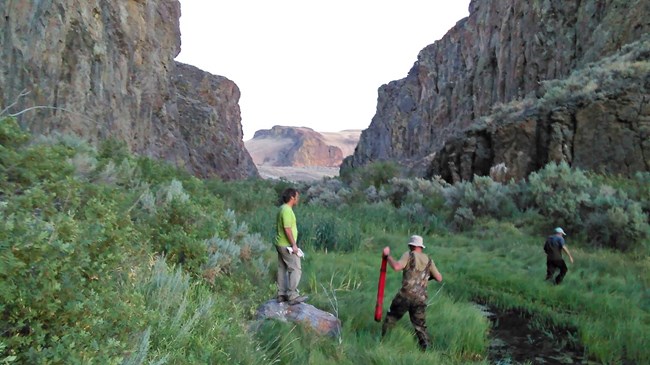Part of a series of articles titled The Midden - Great Basin National Park: Vol. 16, No. 2, Winter 2016.
Article
2016 Nevada Bat Blitz
This article was originally published in The Midden – Great Basin National Park: Vol. 16, No. 2, Winter 2016.

Photo by Aaron Rutledge, BLM-Las Vegas District
The Diversity Division of the Nevada Department of Wildlife (NDOW), along with other partners (including National Park Service (NPS), Bureau of Land Management (BLM), Friends of the High Rock-Black Rock, University of Nevada, Reno, and Humboldt State University), held the annual Nevada Bat Blitz in northwestern Washoe County, in and around the High Rock Wilderness area on August 8-12, 2016.
Sixteen sites were surveyed over four nights. Surveys used a combination of passive acoustic monitoring and active trapping with standard and triple high mist net arrays. Pettersson’s detectors were used to collect most acoustic data, along with Anabats deployed at two sites. Acoustic data analysis using Sonobat, Kaleidoscope, and Analook software is currently ongoing. Mist net arrays were deployed over a mix of both developed and natural waters and nearby meadow habitat.

Photo by Daniel James, BLM, Lassen-Applegate
The Nevada Bat Blitz is sponsored every year by NDOW and partnering agencies to gain a better understanding of local or regional bat populations via area inventories or targeted research projects. Close to 40 participants helped to make this effort a success in conducting the first bat surveys of this region. In particular, we thank National Park Service biologists for deploying acoustic detectors and analyzing acoustic data; and BLM, Lassen-Applegate District, and Friends of High Rock-Black Rock for immense help in providing logistical support and equipment.
Last updated: March 13, 2024
